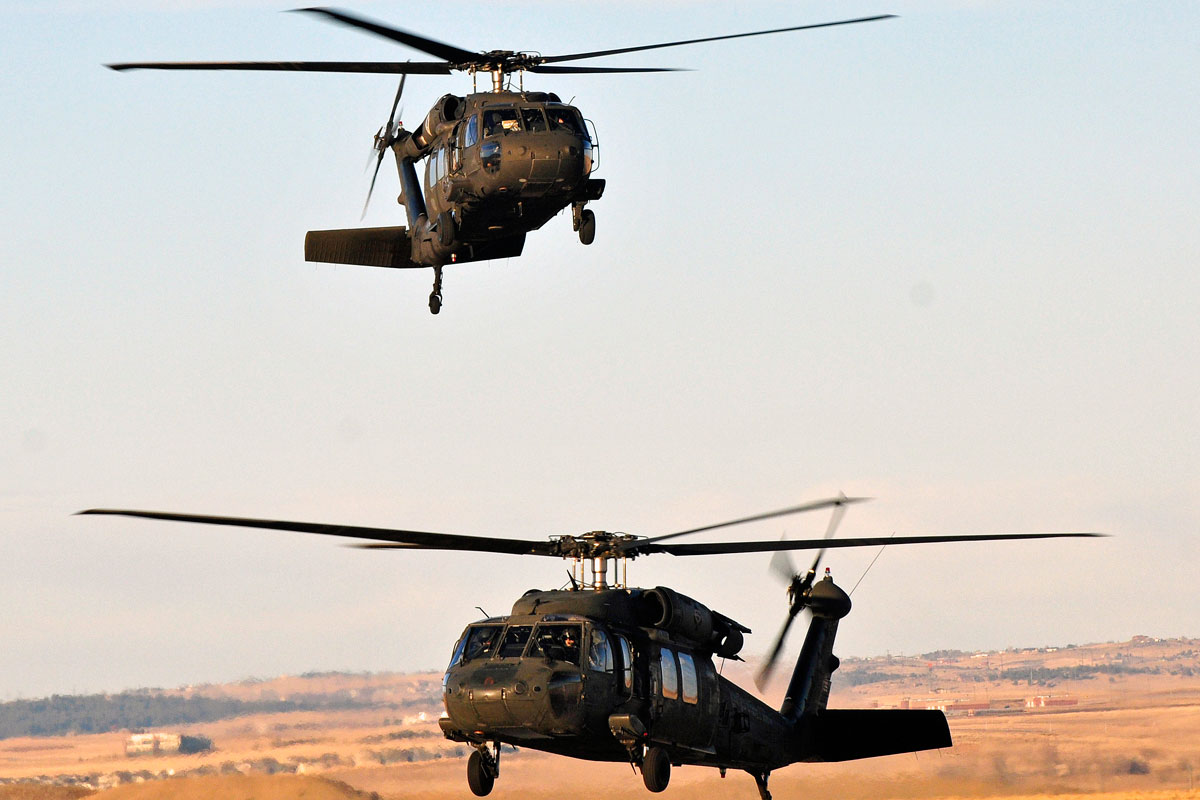UH 60 Helicopter Maintenance: A Comprehensive Guide for Pilots
UH 60 Helicopter Maintenance: A Comprehensive Guide for Pilots
Blog Article
Understanding the Mechanics and Design Behind Uh 60 Helicopters
The UH-60 helicopter, commonly referred to as the Black Hawk, stands as a peak of modern rotorcraft modern technology, symbolizing a blend of durable engineering and elaborate technicians. From its creation to its existing models, the evolution of this airplane showcases a combination of technology and functionality. As we peel off back the layers of the UH-60's layout, a world of detailed systems and precise design emerges. Recognizing the auto mechanics and engineering behind this versatile aircraft reveals a world where accuracy meets power, and where each component plays a critical duty in achieving flight.
History of UH-60 Helicopters
The history of UH-60 helicopters traces back to the late 1970s when the USA Military sought a sophisticated and flexible utility helicopter to replace its aging fleet. In feedback to this requirement, the Sikorsky Aircraft Firm created the UH-60 Black Hawk helicopter. Introduced in 1979, the UH-60 rapidly became a staple in armed forces operations as a result of its remarkable capacities.
The UH-60 was created to stand out in a range of missions, consisting of army transportation, medical evacuation, electronic war, and special operations. Its ability to adapt to different duties made it an important possession to the united state Military and other military forces around the world
Over the years, the UH-60 system has undergone numerous upgrades and variants to improve its efficiency and equal evolving goal needs. These helicopters have seen extensive solution in disputes such as the Gulf War, Afghanistan, and Iraq, showcasing their dependability and versatility in diverse operational environments. The UH-60's rich history is a testimony to its enduring tradition as a top energy helicopter.

Engine and Power Systems
Using advanced propulsion modern technology, UH-60 helicopters are equipped with sophisticated engine and power systems to make sure optimal performance and integrity in a range of functional situations. The UH-60, frequently called the Black Hawk, is powered by two General Electric T700-GE-701D engines, each efficient in delivering up to 1,940 shaft horsepower. These turboshaft engines supply the essential thrust for the helicopter to perform its goals efficiently, consisting of army transportation, clinical evacuation, and fight assistance.

Rotor System and Aerodynamics
Just how do the blades system and aerodynamics of UH-60 helicopters add to their functional performance and trip capacities? The blades system of the UH-60 helicopter plays a critical role in providing lift and propulsion. The UH-60 includes a four-bladed, completely expressed blades system that enables high maneuverability and security during trip. This layout allows the helicopter to carry out a variety of missions, from transportation and clinical evacuation to combat operations.
Aerodynamics likewise play a key function in the performance of UH-60 helicopters. The streamlined fuselage and rotor blade layout reduce drag, enabling the helicopter to accomplish higher speeds and much better fuel efficiency. The wind resistant style of the UH-60 likewise adds to its capacity to operate in diverse environmental problems, including hot temperatures and high elevations.
Avionics and Trip Control Equipment

In its elaborate coordination with the blades system and the rules of aerodynamics of UH-60 helicopters, the avionics and trip control systems create a crucial network of modern technologies shaping the airplane's functional capabilities. In the UH-60, these systems consist of electronic displays, communication radios, General practitioner navigating, weather radar, and auto-pilot systems.
The trip control systems of the UH-60 are accountable for converting the pilot's inputs into the suitable changes to the rotor system, making certain steady trip and ability to move. These systems contain hydraulic actuators, servos, and computer systems that interact to regulate the primary and tail blades, in addition to other flight control surfaces. By precisely taking care of the helicopter's trip characteristics, these systems allow pilots to do a vast array of objectives, from transportation and search-and-rescue to combat procedures, with accuracy and confidence.
Role and Applications in Aviation
Avionics systems in UH-60 helicopters encompass a range of electronic systems that help in navigating, communication, tracking, and managing numerous airplane functions. These systems consist of electronic display screens, autopilot systems, communication radios, General practitioner navigating devices, and climate radar. Furthermore, these systems integrate security functions such as auto-pilot modes, surface awareness advising systems, and stability enhancement see here now systems to boost the overall hop over to here security and functional capabilities of the UH-60 helicopters in numerous goals, consisting of troop transport, medical evacuation, search and rescue, and aerial firefighting.
Conclusion
In verdict, the UH-60 helicopter is a flexible airplane with a rich history and advanced design. Its engine and power systems, rotor system, the rules of aerodynamics, avionics, and trip control systems all function with each other to make it a efficient and trustworthy device.
In its detailed control with the blades system and aerodynamics of UH-60 helicopters, the avionics and flight control systems form a crucial network of innovations shaping the aircraft's functional capacities.The flight control systems of the UH-60 are responsible for translating the pilot's inputs right into the suitable adjustments to the rotor system, guaranteeing stable trip and maneuverability. Avionics systems in UH-60 helicopters encompass a variety of electronic systems that aid in navigation, interaction, surveillance, and controlling different aircraft functions. Furthermore, these systems incorporate security features such as auto-pilot settings, terrain understanding warning systems, and security augmentation systems to boost the overall security and functional abilities of the UH-60 helicopters in various missions, consisting of army transport, medical discharge, search and rescue, and aerial firefighting.
Its engine and power like it systems, rotor system, the rules of aerodynamics, avionics, and trip control systems all work with each other to make it a efficient and reputable equipment.
Report this page